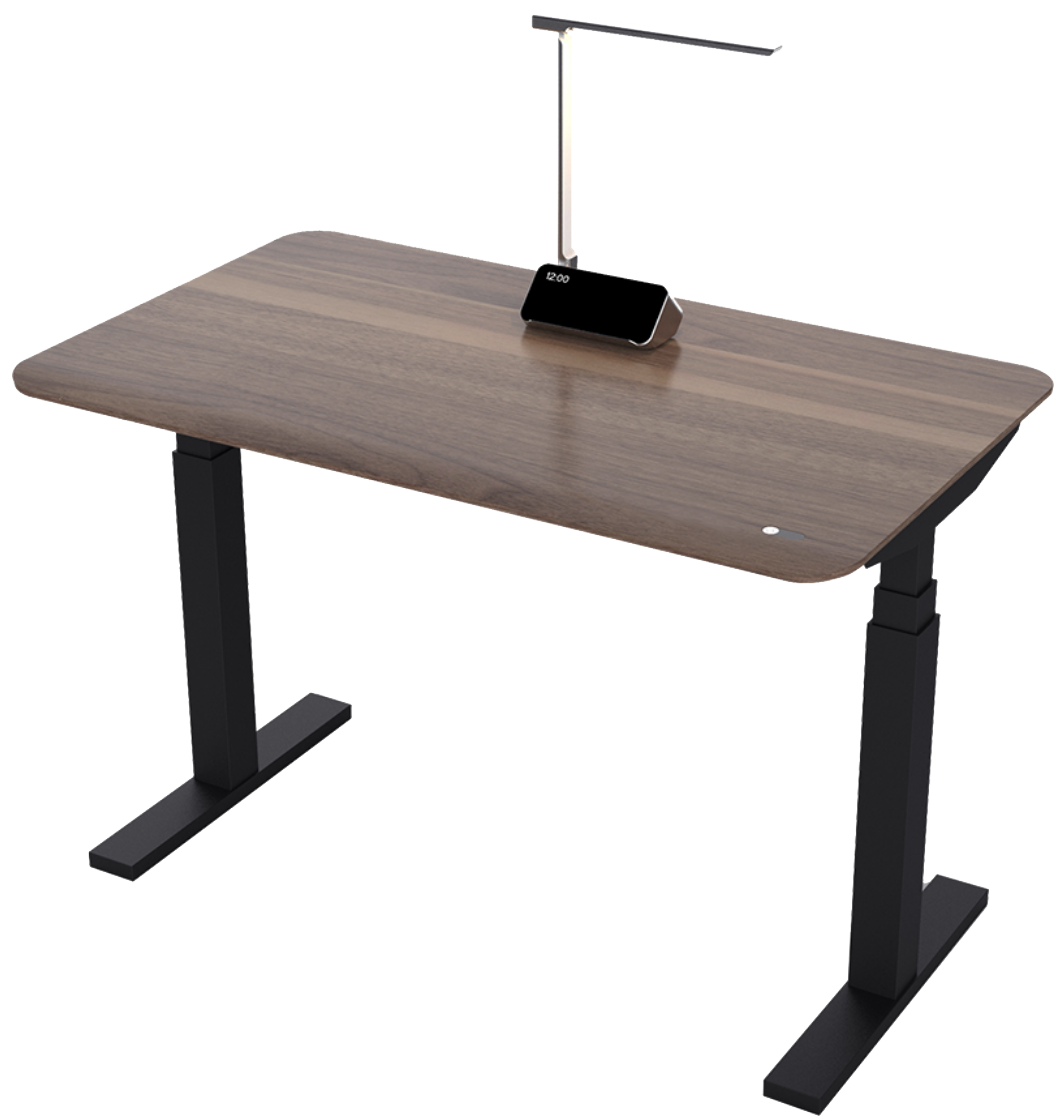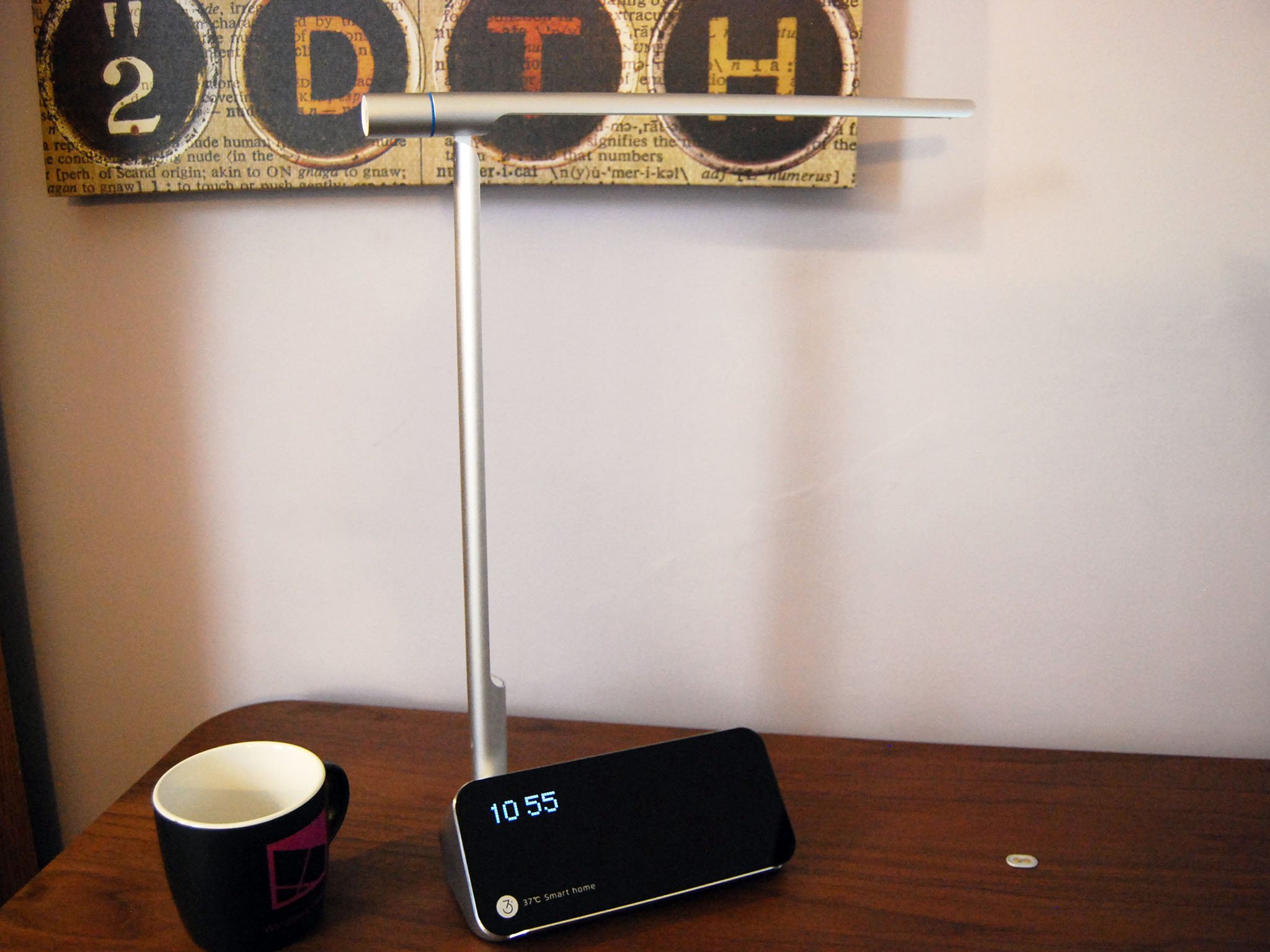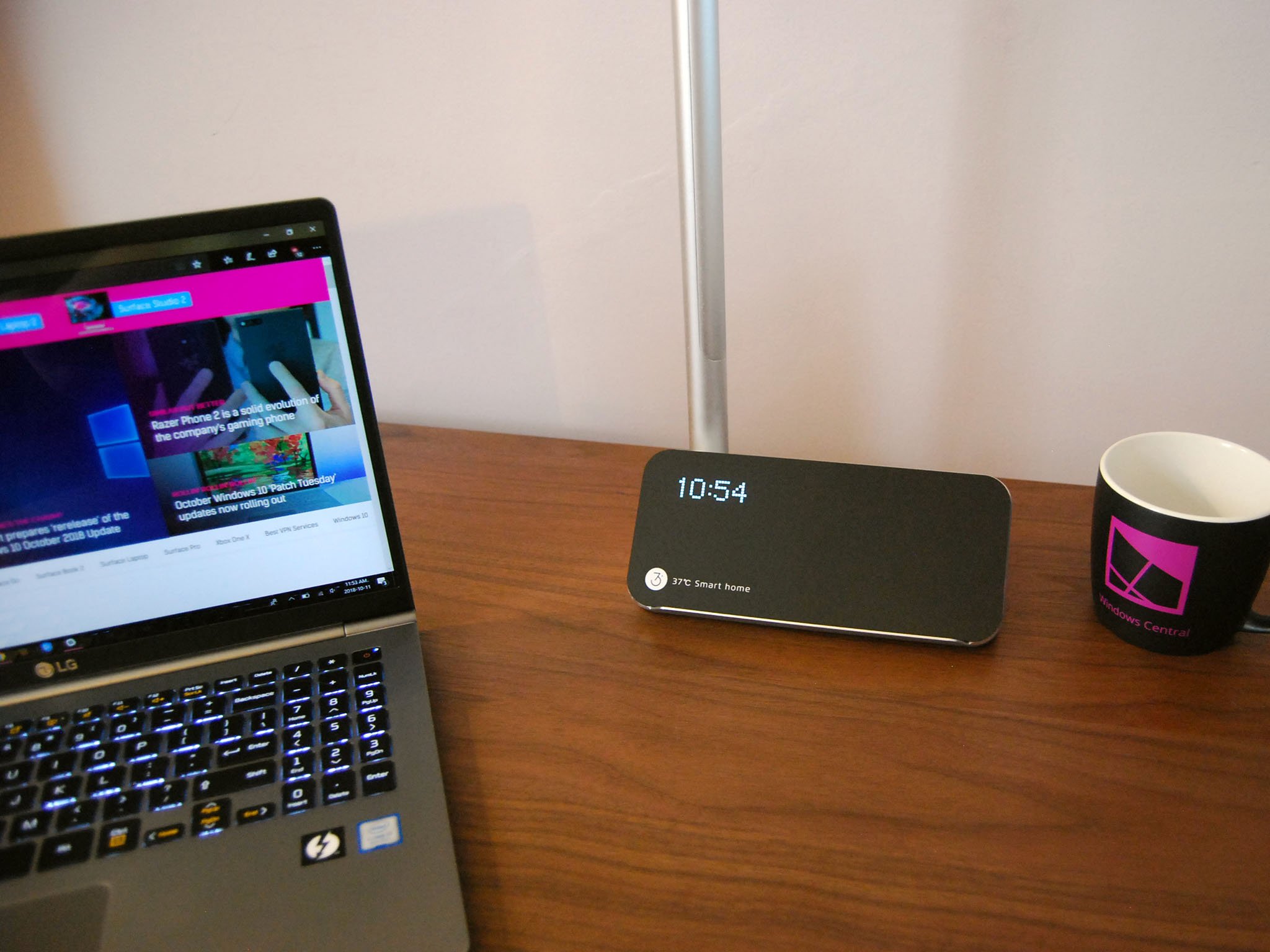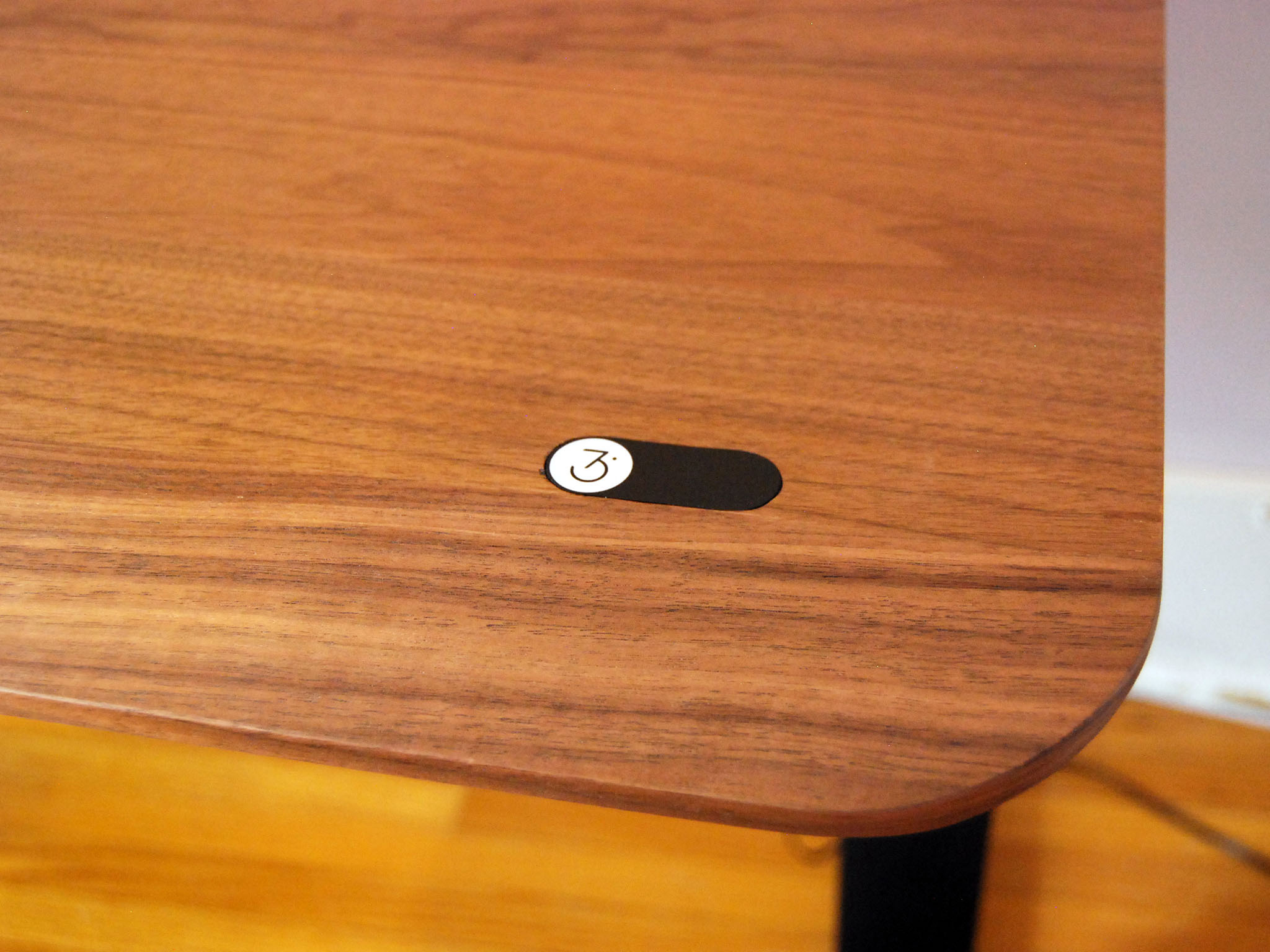Sitting in a chair at a desk all day isn't exactly great for the human body, and this realization has prompted the creation of standing desks from a number of different manufacturers. I regularly use an IKEA SKARSTA desk fitted with a hand crank that raises and lowers the main portion, and it does a great job of allowing a bit of a stretch when I nevertheless still have a lot of writing to get done. However, I would be lying if I said that the minute of cranking hasn't been a deterrent to standing. Yes, I'm lazy.
The Magic Desk from 37 Degree Smart Home makes it as easy as possible to raise and lower the desk, and it also has a bunch of extra features tacked on that aim to keep your working day as comfortable as possible. I've used the Magic Desk for about two weeks now, and while it is a fine piece of furniture, there are certainly some things to be aware of.
37 Degree Smart Home Magic Desk
From $399

Bottom line: The desk base is built well and the desktop is carefully made, but the extra gimmicks, including electronic module and gesture sensor, are cheap and don't really work properly.
Pros
- Solid construction
- Beautiful tabletop
- Automatic up and down
- Quiet motors
Cons
- Attachable console is poorly made
- Light broke almost immediately
- Up and down sensor is not perfect
See at OGadget{.cta .shop}
Automatic standing desk
All the latest news, reviews, and guides for Windows and Xbox diehards.
What you'll love about the 37 Degree Smart Home Magic Desk
Receiving this desk, I was surprised at the overall weight. The desktop is made from a chunk of wood that's about an inch thick, with a tapered edge along the front that does a great job of not causing discomfort in your forearms when typing. It's available in white, black, and plain wood finish (which I have here), and though I've not seen the others in person, I would recommend checking out this one. It has a nice grain and though it's not one solid piece — I can see in the right light where slabs have been joined together — it could certainly fool someone giving it a quick glance.
The rest of the weight is found in the sturdy steel legs. They extend front and back out to just about the edges of the desktop, and there's really no movement at all when you try to jiggle the desk. Adjustable rubber feet on the bottom allow you to find a level position on uneven floors, and the black finish hides dirt much better than the white legs on my IKEA desk.
| Category | Spec |
|---|---|
| Dimensions | 47 inches x 27.5 inches (1.19 m x 0.70 m) or 59 inches x 27.5 inches (1.50 m x 0.70 m) |
| Maximum height | 51.2 inches (1.3 m) |
| Minimum height | 25.6 inches (0.65 m) |
| Weight capacity | 286 pounds (129.7 kg) |
| Finish | White Black Wood |
When moving the desk up and down, which is handled with a gesture sensor built into the bottom-right corner of the desk, the motors attached to the bottom of the desk are relatively quiet and very smooth. Not having to crank the desk up and down is very convenient, though the sensor isn't perfect (more on that below).
The desk can hold up to 286 pounds, which is a considerable amount of weight. I didn't test this claim, but having it loaded with a couple of thick reference books, a 27-inch all-in-one, a stack of laptops, and a bunch of other random gear didn't put it off balance or cause it to wobble. It's available in two sizes if you need something larger than the 47-inch width option I have here, but I find this size is about perfect for a home office.
As for clutter beneath the desktop, there are clips built into the crossbar that easily hold the cables running from power-supply unit to the motors that raise and lower the desk. There doesn't seem to be a right way to arrange things — instructions were vague at best and I had to kind of guess how the thing went together — but I was able to get a clean look that doesn't have cables draped down touching my knees when sitting.
What you'll dislike about the 37 Degree Smart Home Magic Desk



While the desk and stand are both sturdy and seem to be very well made, the additional stuff that makes the desk "magic" are mostly gimmicky and poorly made. The gesture sensor built into the desk notices if you hold your hand above or below it, and will raise or lower the desk accordingly. This is awesome for the first hour, but if you're multitasking, your arm or anything else is going to brush over the sensor at some point and your desk is going to start lowering itself. This happened so often that I eventually unplugged the desk to disable the sensor, only plugging it back in to raise or lower. This kind of removes the convenience aspect, and it also removes the ability to use the powered center console.
The gesture sensor is a great idea in theory, but you'll soon find that your desk is moving up and down when you don't want it to.
The display console, which is expected to have a lot more features in the consumer version than the review sample version, connects magnetically to the desk via a small dock that's located in the middle of the desk. The console has a rechargeable battery inside so it doesn't always have to sit in the middle of the desk, but the dock stays behind no matter what. If you plan on centering g a monitor on the desk, it's going to sit overtop of the dock (which does protrude a bit from the otherwise flat surface).
The console I have here displays the time and has a light attached, and that's about it. The light worked for about five minutes before the power button stopped working and the intensity dial kind of fell apart, and there's no way to change the time displayed on the screen. There's also a USB-A port on the back of the console for charging, but it was clogged with glue and installed crooked so I could not test it out.
The final consumer version of the console will have a few more perks, including a work break reminder, automatic light on and off when it senses you're near, a height display for the desk, and extra up and down buttons if the sensor craps out, but I wasn't able to test any of this stuff. The one I have here ended up on the floor behind the desk almost immediately, and my monitor now sits atop the dock. It's a shame the extra hardware isn't made of the same quality as the base desk and stand, because the combination would be a real winner.
Should you buy the 37 Degree Smart Home Magic Desk?
A Kickstarter campaign has been pushed back a couple of times but is expected to go live closer to October 23. Those who want to get the desk cheaper can take advantage here, with a price of $399 rather than the full $699. This is a much more realistic price, and I think worth it for the stand and desktop alone.
The Magic Desk has a sturdy base, quiet motors, and quality desktop, but the extra features included in the attachable console really don't warrant the regular price. The gesture sensor built into the desk is convenient if you're not often going back and forth between tasks and can keep your arms ahead of you, but if you're like me — always shuffling things around and moving back and forth — the desk is going to try lowering itself when you inadvertently move something too close to the sensor.
I didn't get to try out all the extra features that are advertised with the final version of the Magic Desk console so I can't say whether or not they work, but the one I have here is best ignored. If you want to use the desk with a monitor centered on the desk, the dock is going to be covered anyway. We will update this article when the Kickstarter campaign is live.
37 Degree Smart Home Magic Desk

From $399 at OGadget{.cta .shop}
A sturdy standing desk that tries to be too smart.
It's able to handle a lot of weight and the wood-finish desktop looks great, but paying more for the extra gimmicks that most of the time don't work doesn't make much sense.
Automatic standing desk

Cale Hunt brings to Windows Central more than nine years of experience writing about laptops, PCs, accessories, games, and beyond. If it runs Windows or in some way complements the hardware, there’s a good chance he knows about it, has written about it, or is already busy testing it.



